
This article reports the amount of economic growth in North Carolina in 2016.
- Subject:
- Social Studies
- Material Type:
- Demonstration
- Provider:
- WUNC 91.5
- Date Added:
- 03/08/2017

This article reports the amount of economic growth in North Carolina in 2016.

This lesson will help students to understand the terms that are associated with the New York Stock Exchange. It will also help students to read a stock market report found in any major newspaper or online.

In this lesson, students research to find out the regions that five Native American Tribes in North America lived in, and the natural, human, and capital resources each tribe used that were geographically dependent in order to survive.
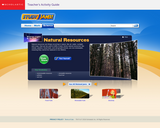
This slideshow explains renewable fuels. A link to a short, self-checking quiz is found on the site.

Students will learn about the resources that are used and produced in North America.

This resource tells the history of the Organization of American States (OAS).

This resource provides a brief history of the Organization of the Petroleum Exporting Countries (OPEC).
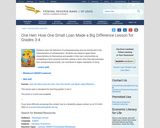
In this lesson, students learn the definition of entrepreneurship and are introduced to the characteristics of entrepreneurs. Students are asked to apply these characteristics to themselves and people in their own communities by completing a story pyramid and then writing a short story that demonstrates how entrepreneurial activity can contribute to higher standards of living.
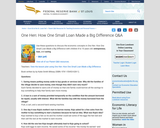
These questions discuss the economic concepts discussed in One Hen: How One Small Loan Made a Big Difference.

This resource explains the Open Door policy initiated by the United States in 1899 and 1900 to protect equal privileges among countries trading with China and in support of Chinese territorial and administrative integrity.

In this lesson, students participate in a simulation that enables them to understand the characteristics of a Market Economic System.
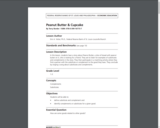
In this lesson, students hear a story about Peanut Butter, a slice of bread with peanut butter, who is looking for a friend. They hear about examples of complement and substitute goods and participate in an activity where they are given a good and they find a partner with a substitute or a complement for that good. They conclude by singing a song about complements and substitutes. The lesson provides the basis for understanding that a change in the price of one good affects the demand for goods that are complements to or substitutes for that good.

The introduction to this lesson is a brief online story about a little girl's visit to a pet store with her father. She considers several pets before choosing a "cute and cuddly" dog. Students are reminded that pet owners are responsible for keeping their pets safe, healthy and happy. A discussion of a pet owners desire to provide the best for their pets leads to an exploration of people's wants.
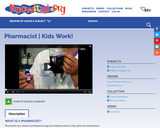
With this video, students learn how pharmacists mix, measure, and dispense drugs prescribed by doctors.

With this video, students learn how physical therapists help people regain strength and improve mobility.
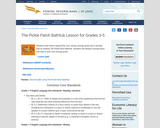
In this lesson, students learn about opportunity cost, saving, savings goals and a savings plan. Students develop savings plans that lead to their own savings goals.
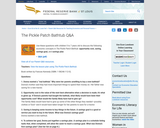
These questions are used to discuss opportunity cost, saving, savings goal, and savings plans in the story, The Pickle Path Bathtub.

After reading and discussing a story about a family during the Great Depression, students differentiate between goods, services, barter, and money. Students are led through several rounds of a barter activity that incorporates math skills. Through this activity, students learn about the difficulties of using barter to satisfy wants.
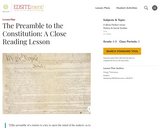
The Preamble is the introduction to the United States Constitution, and it serves two central purposes. First, it states the source from which the Constitution derives its authority: the sovereign people of the United States. Second, it sets forth the ends that the Constitution and the government that it establishes are meant to serve.

Students will experience the difference between producers and consumer by creating a booklet using a production line. Teachers should discuss where things in a store come from and students will be able to define producers and consumers.